Published in the Ocean Watch column, Honolulu Star-Advertiser © Susan Scott
December 3, 2004
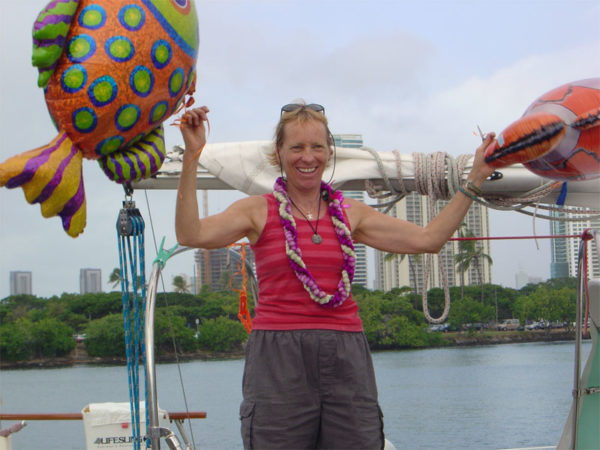
Fish Balloon for the journey
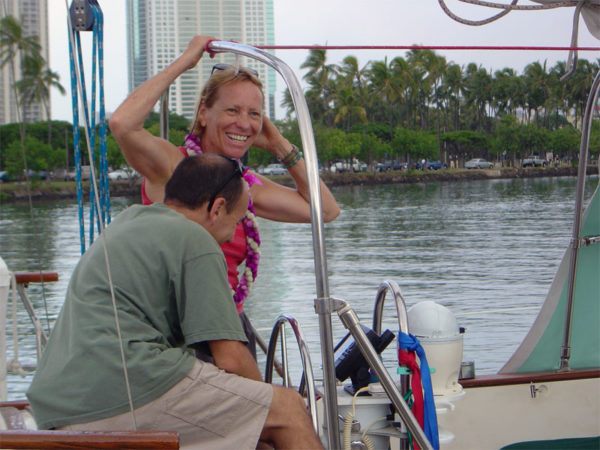
Checking out the map
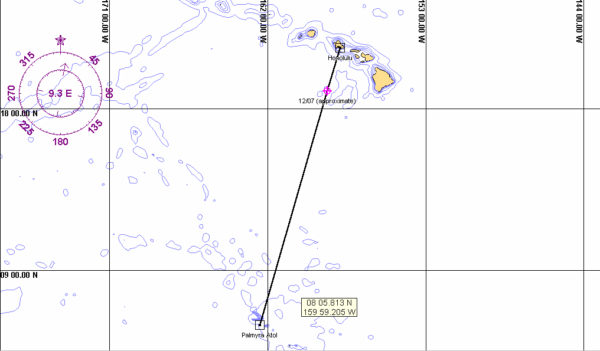
Map of voyage
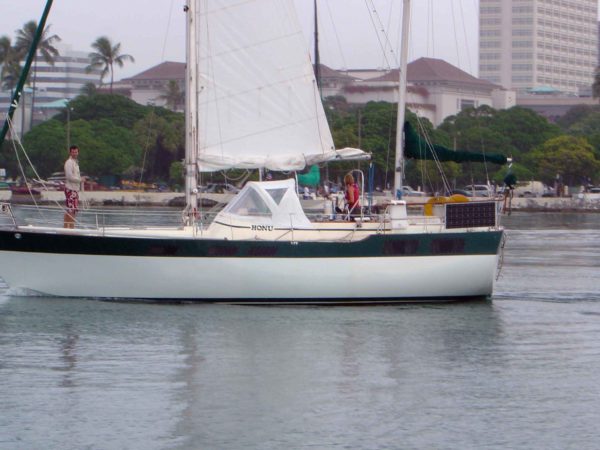
Leaving from fuel dock
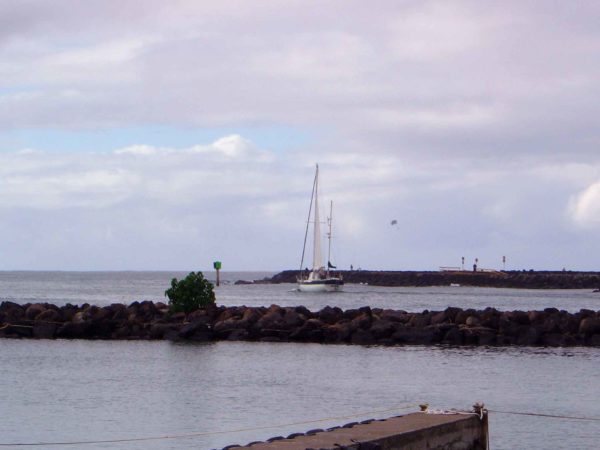
Final sighting leaving from the Ala Wai Boat Harbor
First, the tradewinds aren’t steady this time of year, and if they quit, I have only enough fuel to motor about 72 hours. Then we drift.
When that happens the sails hang limp, the sea flattens and the world turns into an oil painting.
Stillness can be a huge relief, but being adrift gets old fast and gives the term cabin fever new meaning. This is the time to bake bread, sew mosquito nets and appreciate my good-natured first mate, Alex, who, I know from Tern Island, copes well with inconvenience.
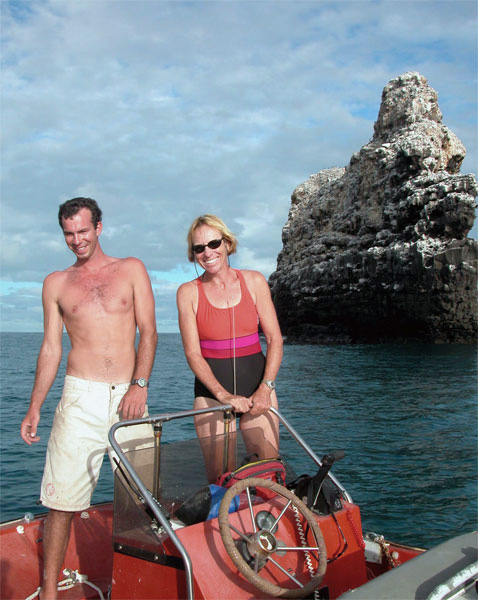
Alex & Susan on Tern Island
At the other extreme, in a big storm we won’t go anywhere, either. Then we’ll reef the sails (make them smaller) and slow the boat. If the seas get enormous, we’ll turn into the wind and heave to, meaning reduce the sail size to maintain direction only.
In a really big storm, we might deploy the sea anchor. This parachute-type thing looks like a big, white squid when you throw it overboard. It fills with water and stops the boat from rolling over.
Just writing about that piece of equipment gives me the willies, but since it’s not hurricane season, I’ll likely have no occasion to use it. Still, Kona storms scare me. If I run into one, I’ll focus on Craig’s two words of wisdom regarding storms: They pass.
Readers and friends ask lots of questions about my 1,000-mile voyage. A common one is, What do you do at night?
Alex and I will take turns every two hours looking for the cruisers’ nightmare: ships on autopilot. Someone, supposedly, is always on watch on those freighters, but it’s wise not to believe it. In collisions, sailboats never win.
Night watch isn’t as bad as it sounds. The phases of the moon become the way to tell time, and the constellations, the seasons.
Also, two-hour watches are manageable but not miserable. With some sleep at night and naps during the day, nighttime at sea can be its own kind of paradise.
As for safety, I have everything short of an escort boat. I’m only a satellite phone call away from Craig, my sailing expert, medical adviser and life-long inspiration. I also have a single-sideband radio, e-mail, radar and three GPS units.
If the worst happens, like we hit something unseen and the boat gets damaged, we have an emergency radio beacon (EPIRB) that signals a satellite, which signals the Coast Guard. It gives our exact location and even the name of our vessel, Honu.
My life raft is brand new, and I keep in mind the sailors’ axiom about those inflatable boats: Only get in one when you have to step up to board it.
Now that I’m prepared for nearly everything I can think of, this voyage will probably be a gentle, rolling, tradewind ride.
Then again, maybe it won’t.